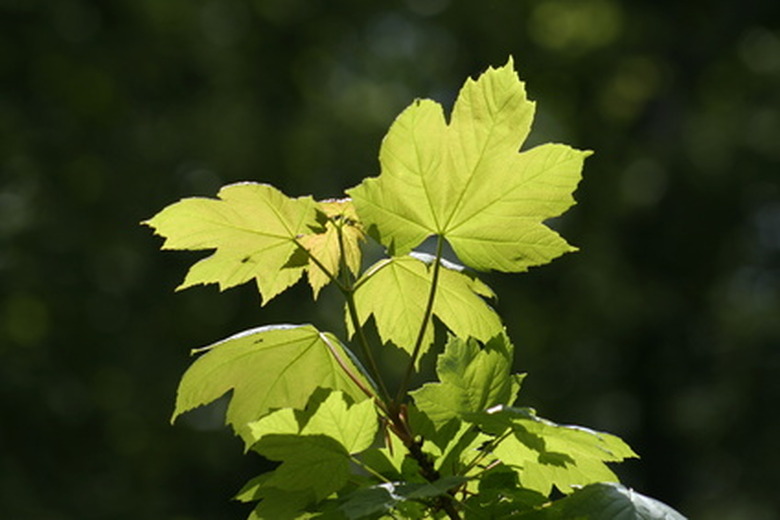Nature Facts About The Sycamore Tree
The sycamore tree — scientific name Platanus occidentalis — is native to central Europe. The tree is found most abundantly in Switzerland, Austria, Italy, and Germany. Sycamores are also found in Great Britain. In the United States, the sycamore tree is cold-hardy in USDA gardening zones 4 through 9.
Bark
The bark of the sycamore tree is smooth. When the tree is young, the bark is grayish. In maturity, the bark is almost white. The bark flakes off in strips of various lengths as the tree increases in girth.
- The sycamore tree — scientific name Platanus occidentalis — is native to central Europe.
- The bark of the sycamore tree is smooth.
Leaves
The leaves of the sycamore tree are shaped like maple leaves. Because of the leaves, the sycamore tree is sometimes referred to as the Great Maple tree. The leaves are light green, and turn golden during the autumn. The tree is deciduous, and loses all of its leaves during the fall.
Growth
The sycamore tree grows very rapidly. Sycamore trees that are 10 years old reach up to 25 to 28 feet tall. Thereafter, the tree grows at a steady pace until it is full-grown. A full-grown sycamore reaches 50 to 60 feet tall in 50 to 60 years.
- The leaves of the sycamore tree are shaped like maple leaves.
- Sycamore trees that are 10 years old reach up to 25 to 28 feet tall.
Blooms
Blossoms appear on the sycamore tree in March or April, shortly after the leaves start growing back. The flowers are small and green. Each blossom has six or eight petals, and the same number of sepals and stamens.
Needs
Sycamore trees prefer moist, well-drained soil. Soil that is too clay-like can be mixed with gardening sand or perlite, at a ratio of 1 to 1, to create the proper environment. Sycamores prefer full sun, and should be planted in an area that receives at least eight hours of direct sunlight per day.
Facts About Sycamore Trees
Grand and majestic sycamore trees (Platanus) have a lot going for them. It was widely planted in major cities throughout the world for its smog tolerance. * Oriental plane tree (Platanus orientalis) is native from southeastern Europe all the way to Asia Minor and grows in USDA zones 7 through 9. All have golf-ball-sized seed clusters covered completely with small, fuzzy spikes. Their massive size results in a high level of seed cluster, leaf, twig and bark debris, and their roots can buckle sidewalks and driveways once the trees reach maturity. The American sycamore and Oriental plane trees have medium-weight wood that is sturdy and durable, but also easily worked.
- Blossoms appear on the sycamore tree in March or April, shortly after the leaves start growing back.
- It was widely planted in major cities throughout the world for its smog tolerance. * Oriental plane tree (Platanus orientalis) is native from southeastern Europe all the way to Asia Minor and grows in USDA zones 7 through 9.
References
- Arkive.org: Sycamore
- Missouri Botanical Garden: Platanus
- Urban Forests Ecosystems Institute: California Sycamore
- Missouri Botanical Garden: Platanus × Acerifolia
- Missouri Botanical Garden: Platanus Occidentalis
- Missouri Botanical Garden: Platanus Orientalis
- American Hardwood Information Center: Sycamore
